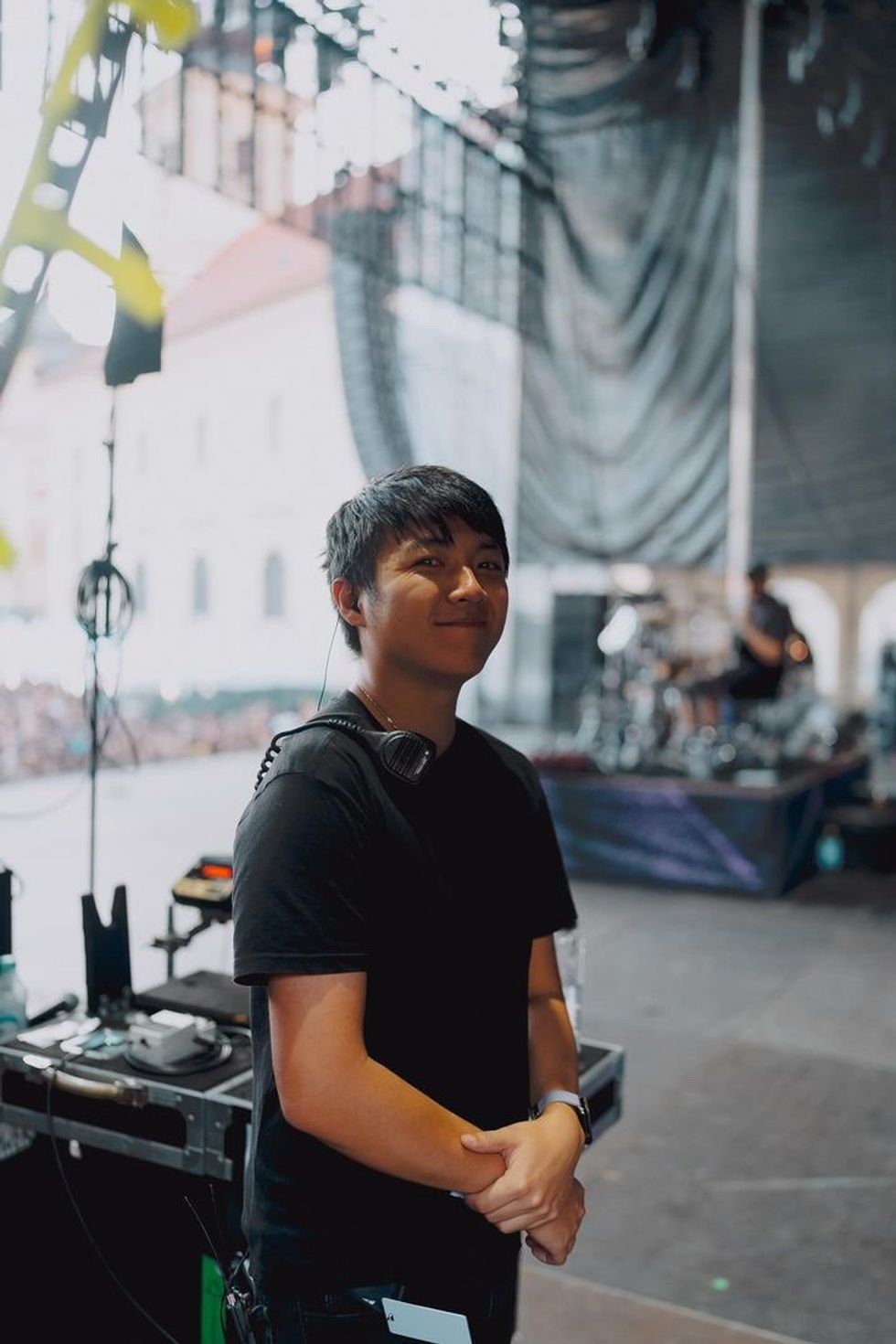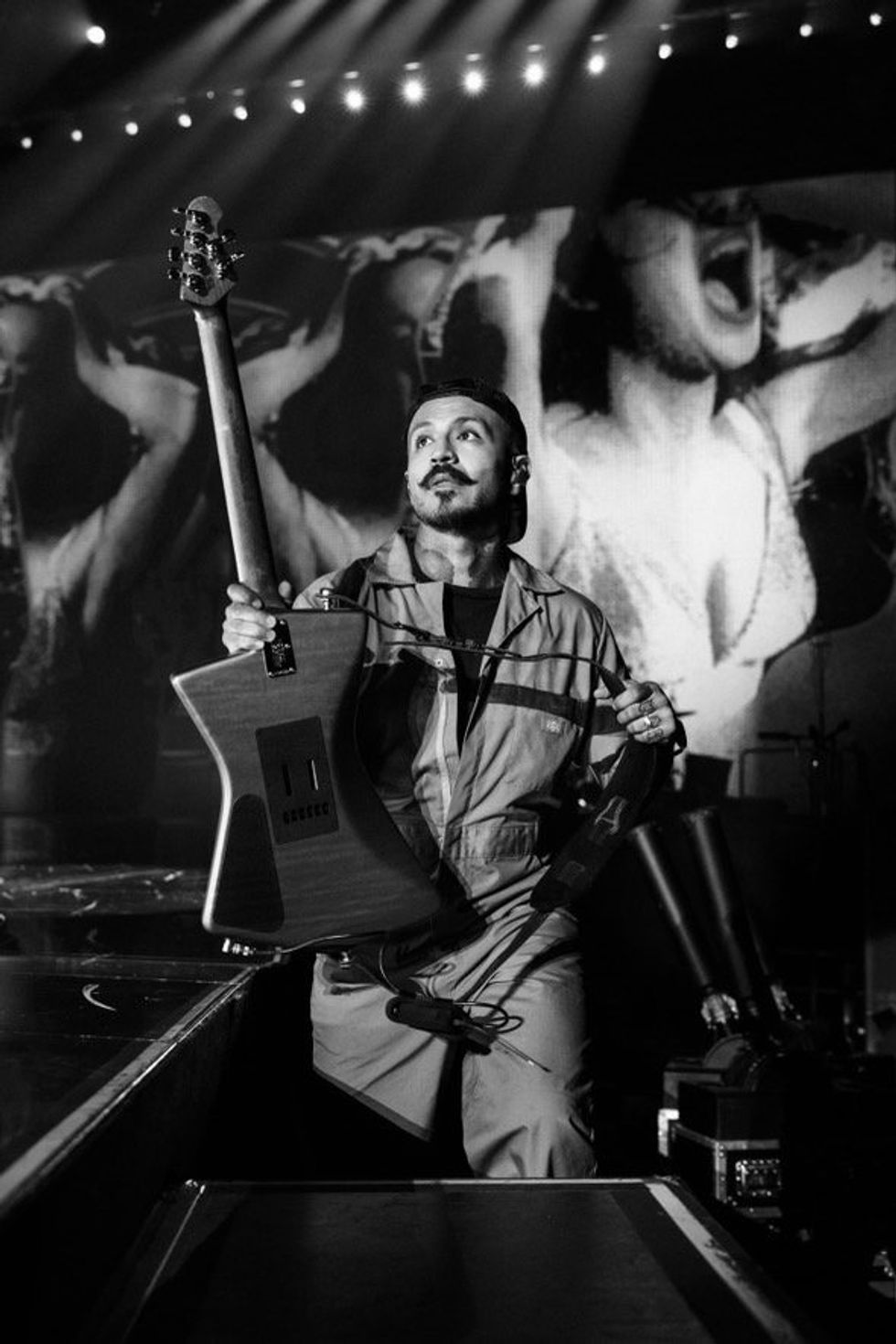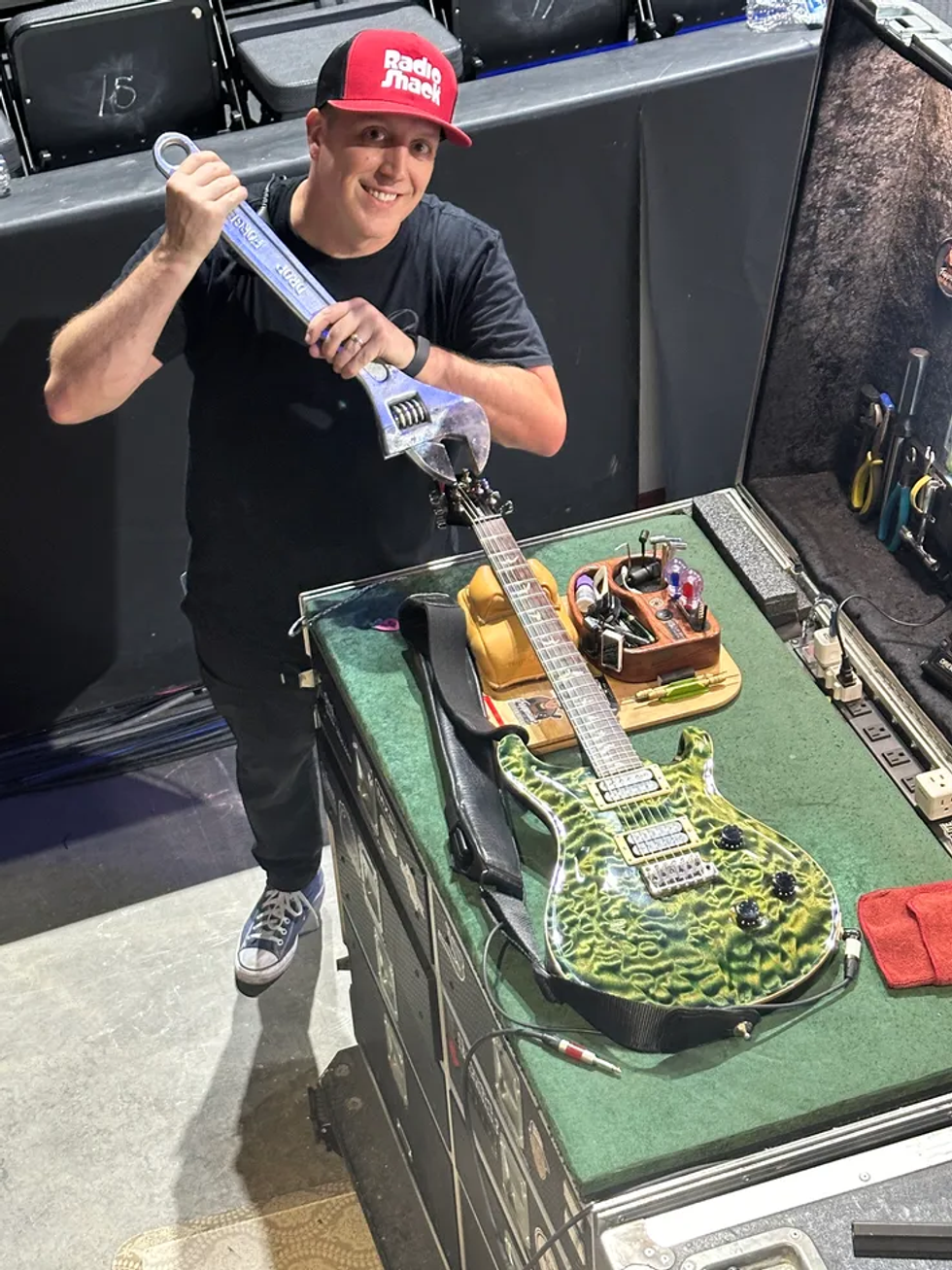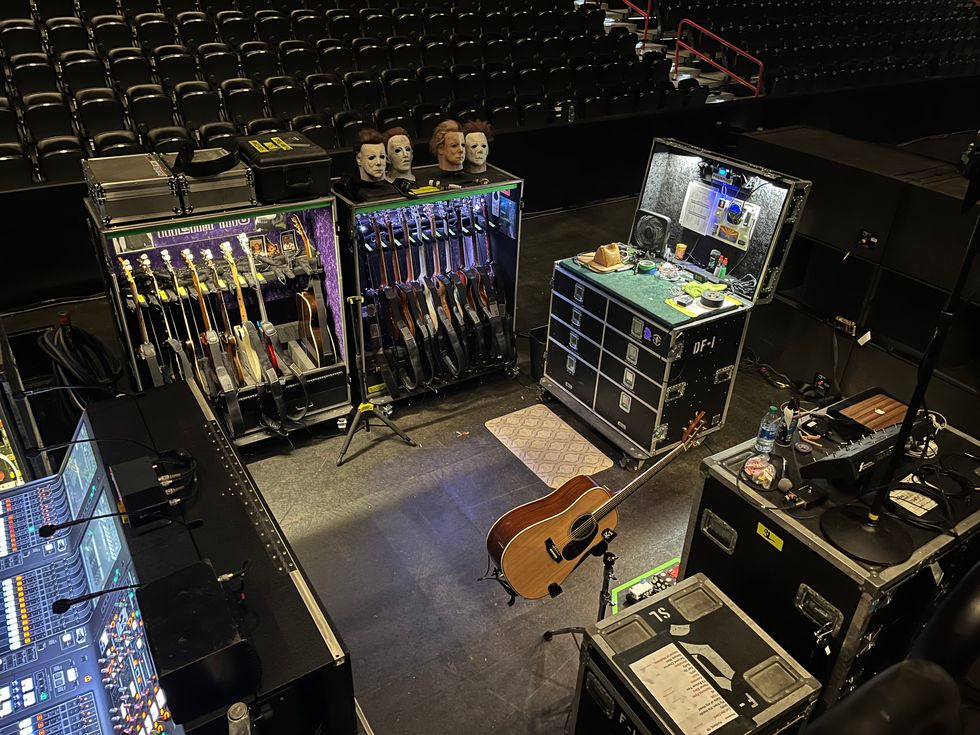“There are two wolves inside me,” says Kyle Seely. “One of them wants to just bring the JCM800 and a distortion pedal, and the other one’s like, ‘I’m bringing the Helix and I’m making a different patch for every song.’”
Seely, who plays lead guitar in Philadelphia band Sheer Mag, is the designer and engineer behind the guitar sounds for the arena-gone-garage-rock outfit. Matt Palmer, his rhythm guitar counterpart, smirks. “Every single tour, Kyle is like, ‘I’ve finally figured it out, I’m going to simplify it.’ It’s never simpler,” he chuckles.
Seely’s self-described “endless tone quest” and the tight, gritty weave of his and Palmer’s guitars have helped grow Sheer Mag into one of the most beloved independent American guitar bands of the past decade. The core quartet, with vocalist Tina Halladay and bassist and producer Hart Seely, Kyle’s brother, emerged from Philly’s punk scene in 2014 with a string of bare-knuckled EPs. Their first full-length, 2017’s Need to Feel Your Love, scored spots on plenty of reputable year-end lists, and the track “Expect the Bayonet” was featured at one of Bernie Sanders’ 2019 rallies. That year, the band released A Distant Call, another fan and critic favorite, via their Wilsuns label.
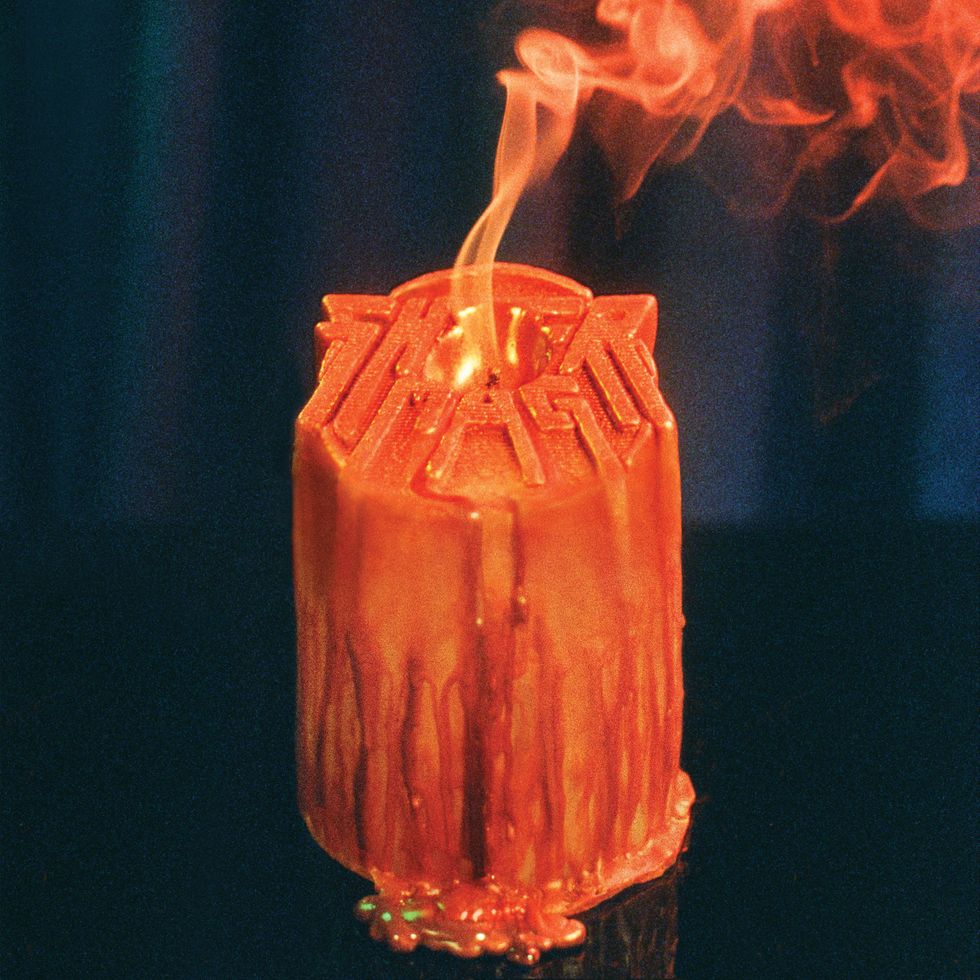
Sheer Mag signed to Jack White’s Third Man Records for their new release, but they still did things their way, recording in an industrial warehouse jam space on the edge of Philadelphia.
Now 10 years in, they launched their third LP, Playing Favorites, in March with Third Man Records—their first step into “the proper label world,” says Seely. The record is a lo-fi riot, a hyper, tireless romp through the gasoline-slicked back alleys of disco, punk rock, glam, and metal.
But on Playing Favorites, more than any of their other records, the band is open about their compositional ambition and commitment to making songs that are just a blast to listen to. (The record’s title winks at this.) The thrifted and dirtied-up disco of “All Lined Up” is one of the band’s most impressive compositions to date, topped only by the Boston-ish funk-rock odyssey of “Mechanical Garden.” After a vintage metal intro, the track warps into a string section that slows and then, thanks to some careful tape trickery from Hart Seely, gradually melts upward to a new key and swaggering groove. Later, a scorching, treble-blasted solo from Tuareg guitar hero Mdou Moctar streaks across the stars. But the record’s highlight has to be the delicious strut of “Moonstruck,” which might have the best chorus of the year, and sports some of Kyle Seely’s most exciting lead work yet. (Seely’s Southern rock tendencies and the round, percussive tone of his Nashville Tele are virtually calling cards for the band at this point. “I can’t not add a ton of vibrato,” he says. “I love the Allman Brothers, Marshall Tucker Band, a lot of the major, mixolydian kind of soloing.”)
Kyle Seely's Gear
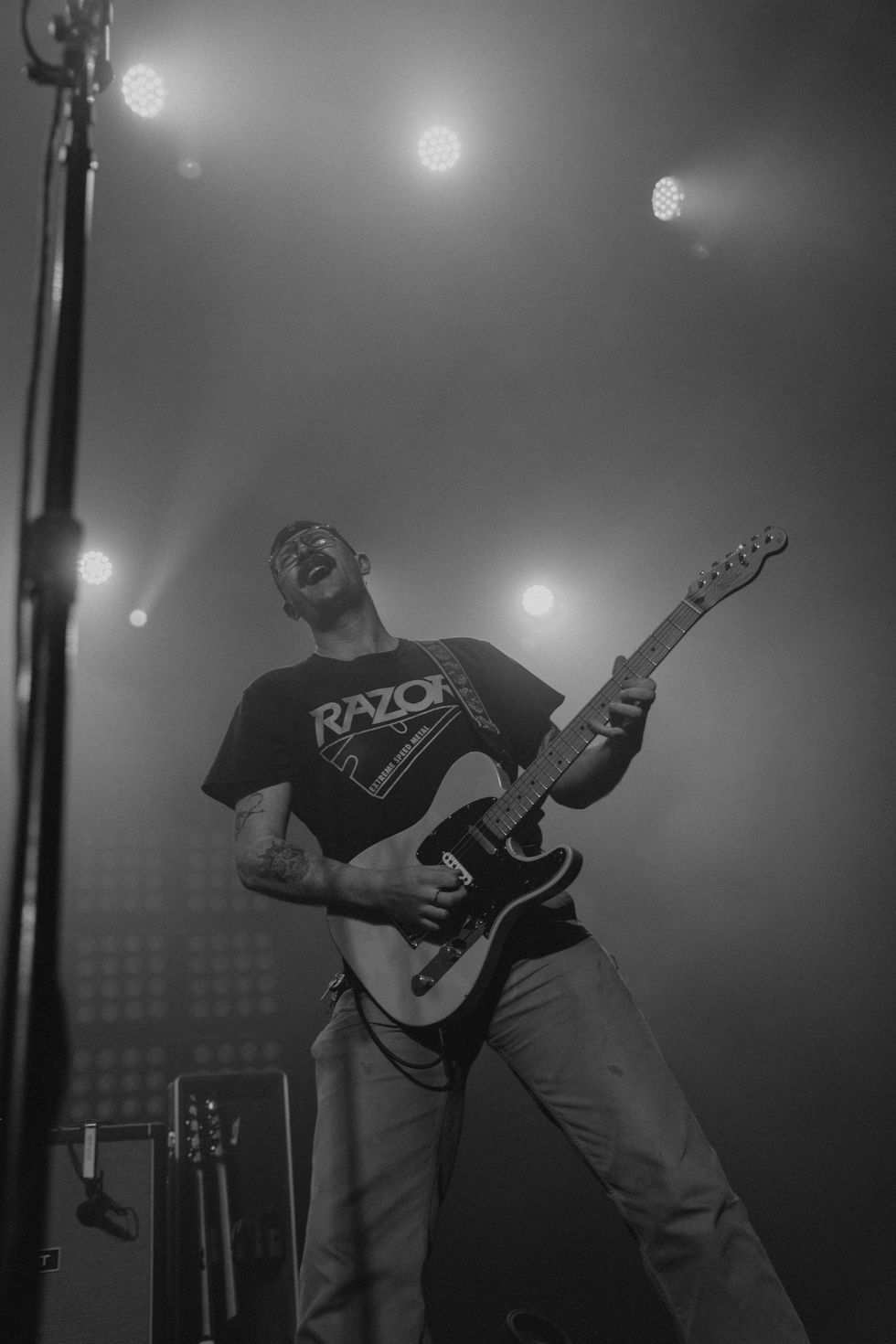
Kyle Seely handles the bulk of the band’s tone-sculpting, digging for sounds between his JCM800 and his brother Hart’s effects units.
Photo by Joanna Roselli
Pedals
- TC Electronic Mimiq
- Ensoniq DP/4
Strings & Picks
- D’Addario XL Pure Nickel strings
- Dunlop Jazz III nylon picks
Despite the label association, the band recorded Playing Favorites in true Sheer Mag style, in a warehouse in Philly that doubles as a practice space for a bunch of bands. The space’s wiring produces an audible hum on any amp that plugs in there, a stamp that Kyle says can be heard at the very start of “Moonstruck.” Hart engineered the sessions using a 16-channel mixer to a Tascam tape machine—another piece of Sheer Mag’s rough-edged charm. And Hart’s bass lines, which often form a unique melody on their own, cement the band’s signature dual-guitar growl. Though they haven’t been quite as audible until now, disco and funk have always been cornerstones of the Mag sound, alongside classic rock and power-pop. Kyle and Palmer agree that the give-and-take of Chic’s Nile Rodgers and Bernard Edwards was particularly instructive. “They would do this stuff where they were just filling in the space between each other, so they weren’t all just playing the same riff, but there’d be a groove,” says Seely.
“We’re almost like a mashup band, where it’s original content, but we’re essentially mashing up different philosophies of rock.” —Kyle Seely
Those influences are especially present this time out—Playing Favorites is certainly the band’s most danceable record yet. But it’s still a hard-rockin’ power-pop record, and Sheer Mag are still jacking the best vibes from Duke Jupiter, Stampeders, the Records, Neil Diamond, Quiet Riot, Badfinger, and other oddities from the borders of ’70s and ’80s guitar music. Somehow, those sounds haven’t lost their luster. When Palmer returned to Philadelphia from a stint living in Australia, he started playing old Thin Lizzy, Bee Gees, and Twisted Sister records to prepare for making the new album. He was pleasantly surprised to find those classics still moved him. “It was a really special feeling to be as excited about the original influences of the band 10 years later,” says Palmer. “The initial Mag feeling was still there.”
Matt Palmer's Gear

Palmer, seen here with his Peavey T-60, revisited the band’s original influences to prepare for Playing Favorites. They hadn’t lost any of their magic.
Photo by Joanna Roselli
Guitars
- Peavey T-60
Amps
- Fender Hot Rod DeVille III 410
But unlike some of the big-budget, one-note arena- and glam-rock records of the ’80s—which has become one of the most passé and snickered-about genres of the past 100 years—Sheer Mag bookend their hooks with production flourishes that deepen their impact: a weirdo delay here, a doubled vocal there, a grimy sonic palette flickering in the background, all rendered with delicious imagination and precision.
“You do want to punch them in the face with something memorable, but also, I think the record is built to reward repeat listening, and you can dig into the deeper textures and complexity the more you listen to it,” says Kyle Seely. “We’re almost like a mashup band, where it’s original content, but we’re essentially mashing up different philosophies of rock. I get excited when people are like, ‘That sounds like Jackson 5 meets Aerosmith.’”
Sheer Mag - Expect the Bayonet [Live at Urban Lounge]
Sheer Mag rip through their Bernie Sanders-approved warning cry, “Expect the Bayonet,” in Salt Lake City in 2022.














 Zach loves his Sovtek Mig 60 head, which he plays through a cab he built himself at a pipe-organ shop in Denver. Every glue joint is lined with thin leather for maximum air tightness, and it’s stocked with Celestion G12M Greenback speakers.
Zach loves his Sovtek Mig 60 head, which he plays through a cab he built himself at a pipe-organ shop in Denver. Every glue joint is lined with thin leather for maximum air tightness, and it’s stocked with Celestion G12M Greenback speakers.








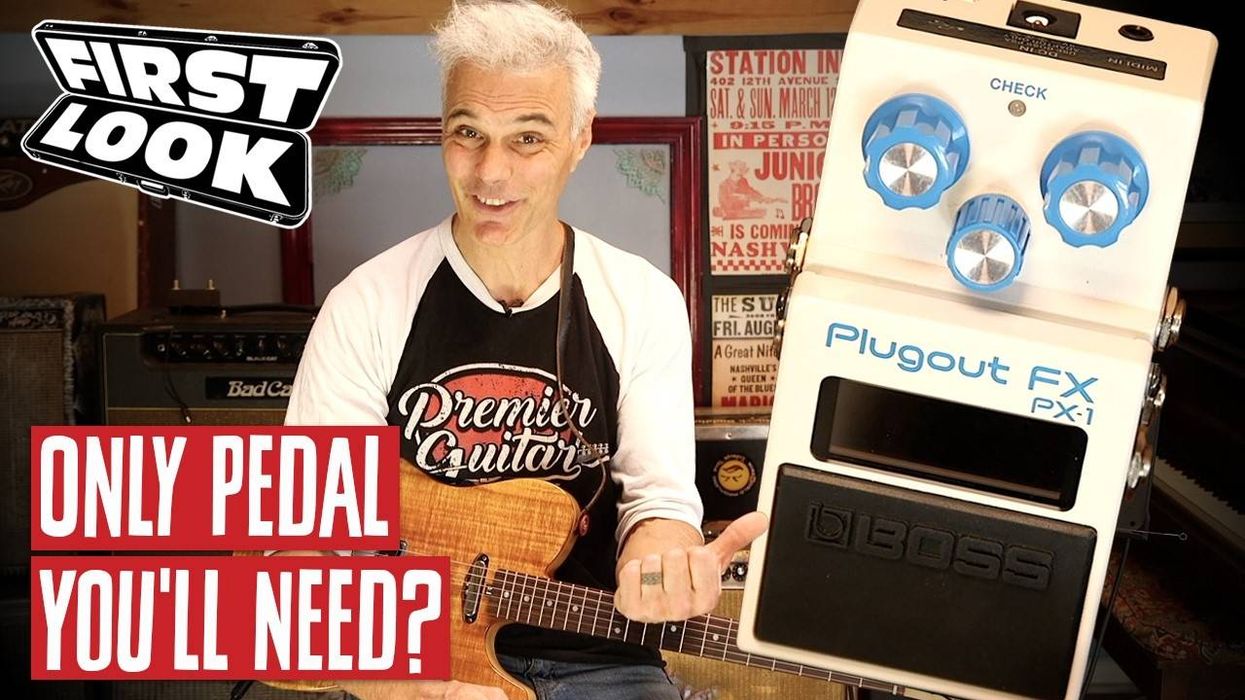

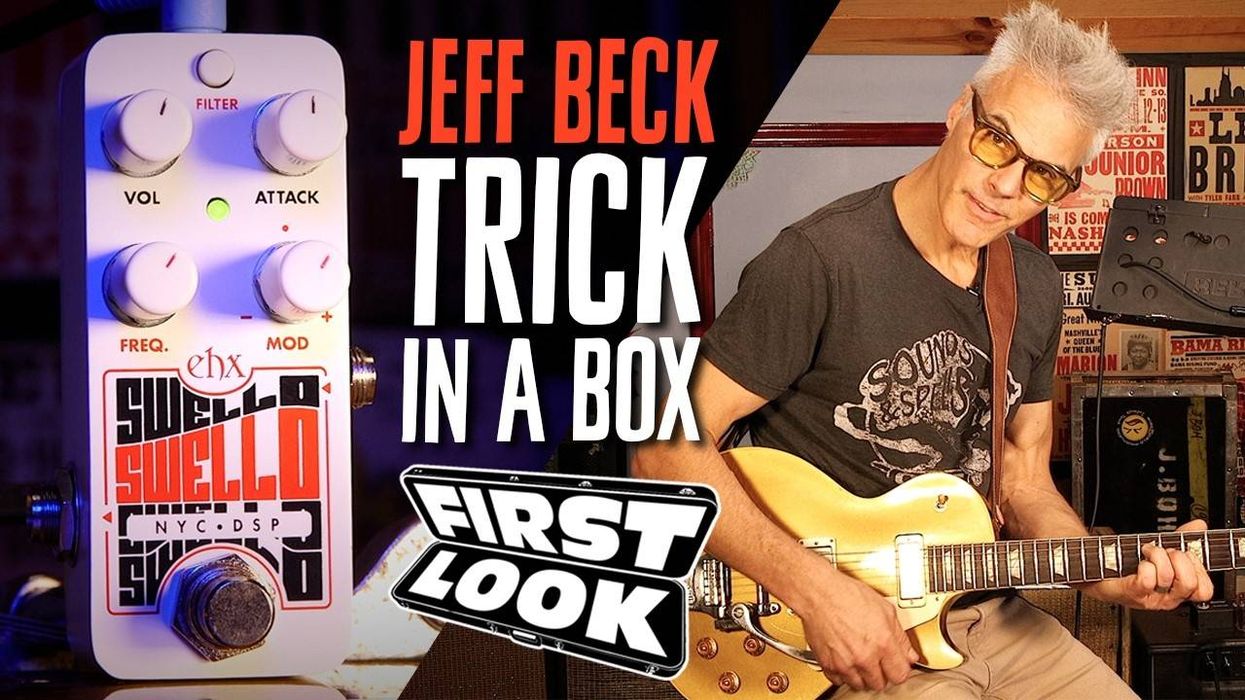
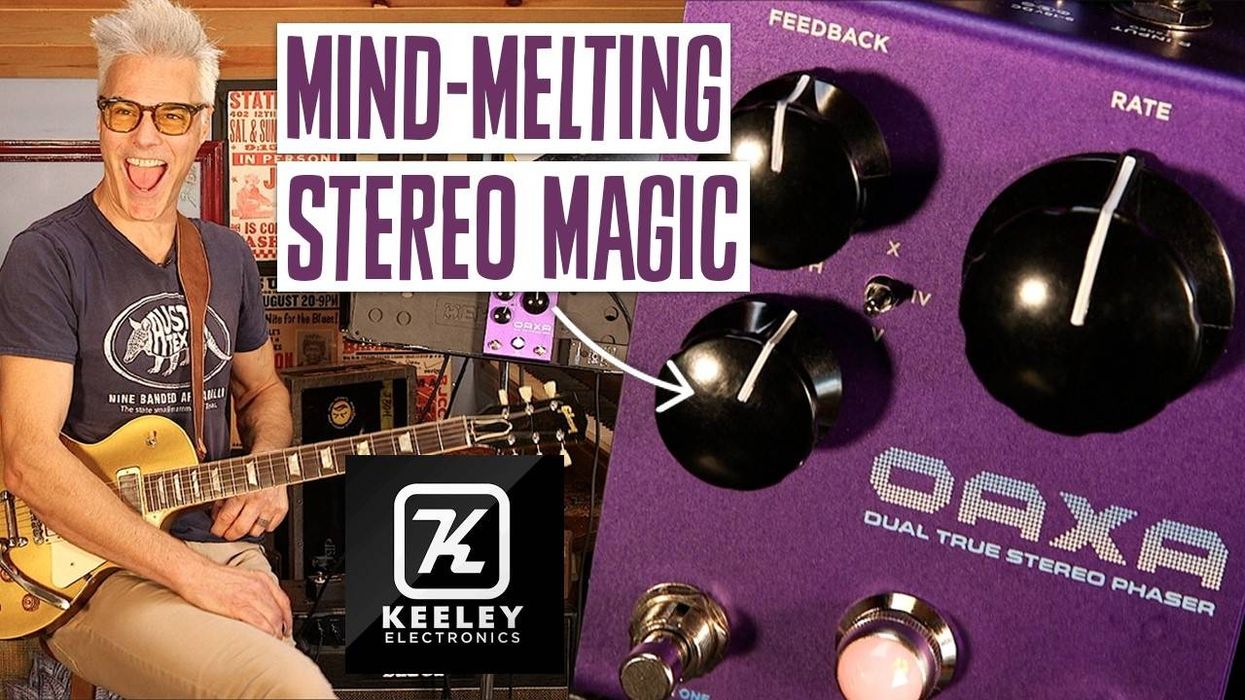
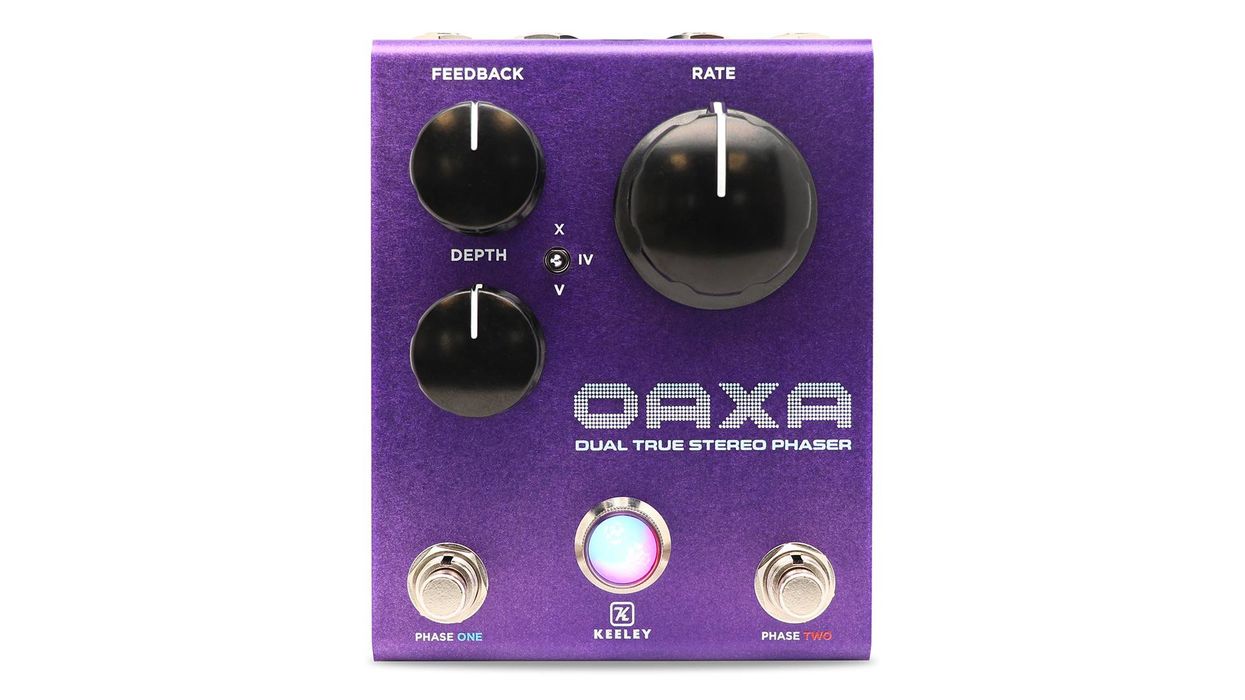





![Devon Eisenbarger [Katy Perry] Rig Rundown](https://www.premierguitar.com/media-library/youtube.jpg?id=61774583&width=1245&height=700&quality=70&coordinates=0%2C0%2C0%2C0)







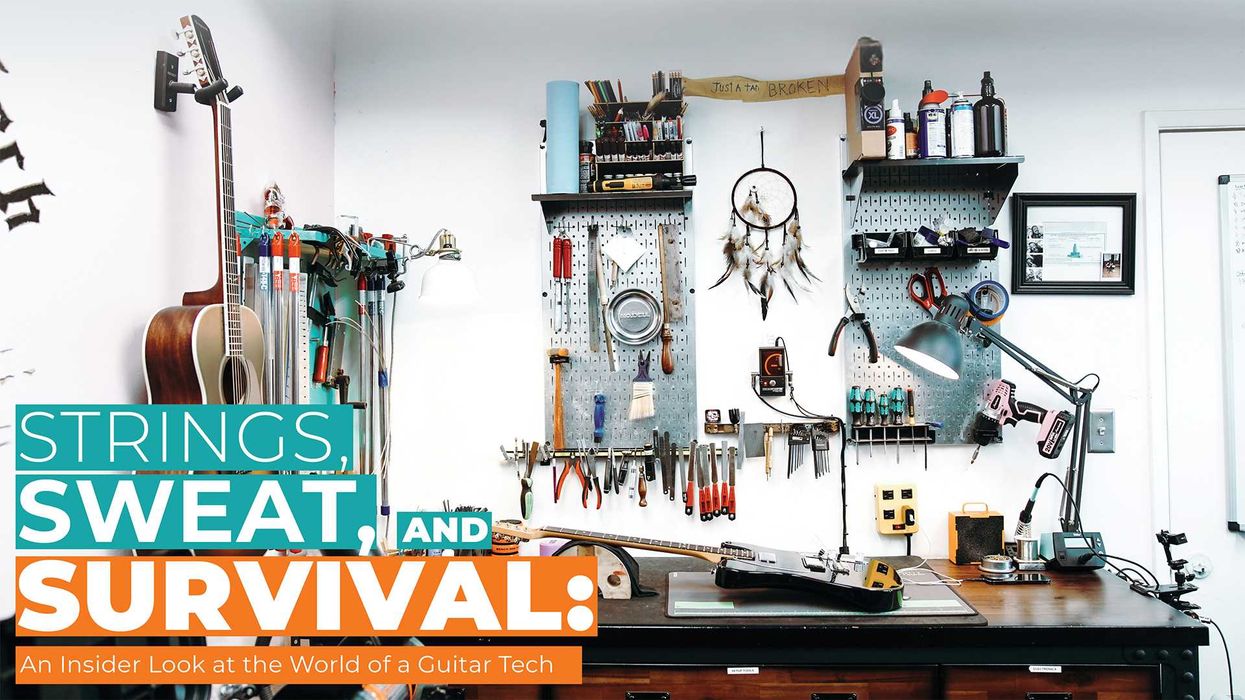
 Luis Munoz makes the catch.
Luis Munoz makes the catch.